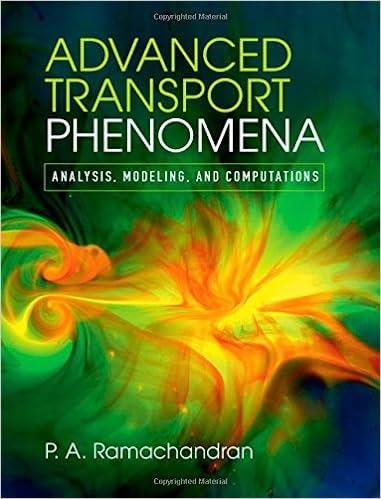How are the unit vectors in cylindrical coordinates related to unit vectors in Cartesian coordinates? Write this
Question:
How are the unit vectors in cylindrical coordinates related to unit vectors in Cartesian coordinates? Write this in a vector-matrix form as
\[E=L E^{*}\]
where \(E\) are the components of the unit vectors in one coordinate while \(E^{*}\) are the components of the unit vector in the other coordinate system. \(L\) is a matrix that is often called the coordinate transformation matrix. Verify that the matrix \(L\) is symmetric. What is its inverse?
Use the above properties of \(L\) or other ways to express a given vector in Cartesian coordinates related to the same vector in cylindrical coordinates. Show that the vector components transfer by the same rule as the coordinate components. This is referred to as an invariance property of a vector.State the coordinate transformation matrix in spherical coordinates.
Step by Step Answer:

Advanced Transport Phenomena Analysis Modeling And Computations
ISBN: 9780521762618
1st Edition
Authors: P. A. Ramachandran





